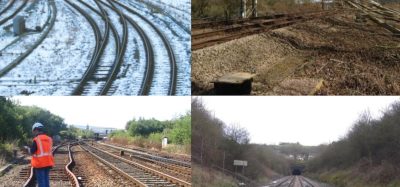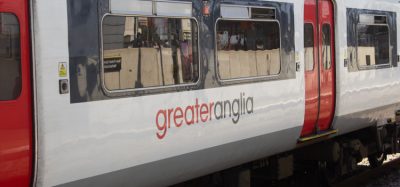Why is the Asian Development Bank investing in Sri Lanka’s rail sector?
Posted: 3 September 2019 | Johan Georget - ADB Transport Specialist | 1 comment
Following the Asian Development Bank’s (ADB) first loan granted to help improve Sri Lanka’s railway sector, Johan Georget, ADB’s Transport Specialist, discusses the role the bank plays in the development projects they choose to invest in.


Why was a decision made to invest in Sri Lanka‘s rail development, and what was the process?
This project is the result of extensive upstream work and cooperation with the government, Sri Lanka Railways (SLR), and ADB, which have established a very strong partnership to identify railway projects to finance and implement. At the higher level, ADB prepares a five-year country partnership strategy to identify the sectors in which we wish to invest, and the strategy for 2018-2022 included railways as one of the key areas to support Sri Lanka’s economic development and transition to upper-middle income status.
At the sector and project level, since 2015 ADB has been providing, firstly, a technical assistance grant of $1 million to develop a 20-year strategy for SLR through a Railway Master Plan, secondly, a technical assistance grant of $1.45 million prepare project-specific prefeasibility studies for the Colombo Suburban Railway Project, and, thirdly, a technical assistance loan of $24.4 million to prepare feasibility and detailed design studies in the railway, port, and road sectors.
The technical assistance for the Colombo Suburban Railway Project identified five main areas that were able to be improved in a relatively short-term period and deliver benefits to both passengers and Sri Lanka Railways, and this resulted in the first project loan of ADB for the Railway Efficiency Improvement Project – a major outcome of the initiatives that started in 2015. The Railway Efficiency Improvement Project will finance several sub-projects in operations, maintenance, safety, skills development, and technical capacity that are able to be operational in a relatively short-term period; and build capacity to prepare the future large-scale infrastructure projects that are envisioned as the next steps for financing. Sub-projects notably include the replacement of the ticketing system, telecommunications system, train control centre, and operations headquarters; track and rolling stock maintenance equipment; technical training school facilities and curricula upgrade; a strategic study for transit-oriented development and land value capture, and a feasibility and detailed design study for the Kandy suburban railway network..
Once the funding had been supplied, how involved has ADB been in the development project?
ADB is a development bank, and the development aspect is just as important as the bank aspect. While the government is responsible for the implementation of the project, ADB is closely involved and provides guidance, particularly on any environmental safeguard, social safeguard, procurement, consultant management and financial management aspects. ADB is closely involved in the field notably through the Sri Lanka Resident Mission, based in Colombo, where over 35 staff are involved in discussions with the government and implementing agencies on a daily basis.
What was so enticing about the project for Sri Lanka Railways?
Sri Lanka Railways was established in 1858, but has received comparatively limited investments since the 1970s. Consequently, the sector still operates very manually, and in many aspects SLR can be considered as a heritage railway.
Sri Lanka Railways was established in 1858, but has received comparatively limited investments since the 1970s. Consequently, the sector still operates very manually, and in many aspects SLR can be considered as a heritage railway. With this perspective, the work of SLR employees is truly admirable in managing to successfully operate and maintain the railway network everyday, with generally old equipment and limited funds, in a tropical climate that is harsh on the infrastructure.
This project aims to provide a much needed investment and upgrade in several operational aspects of SLR.
Given the recent economic development trends, the road network has significantly expanded, sales in cars are booming, and in turn this results in more and more congestion especially in suburban Colombo. Meanwhile, trains are often overcrowded due do lack of capacity. This project aims to provide a much needed investment and upgrade in several operational aspects of SLR. The project is also part of our strategy to provide a comprehensive investment and upgrade plan for the sector, with the aim to increase the environmental sustainability of Sri Lanka and Colombo, and encourage the movement of people and goods through the railway network.
What do you think is integral to the success of a development project?
The main factor is probably the country’s and organisation’s ownership of a project, which means adequate institutional setups, and the willingness of executives, management and operational levels to implement the project. We try our best to respond to the needs of our clients, while providing them with the tools and resources to innovate, modernise and focus on international best practices.
What are the greatest challenges faced in development projects?
Most of the challenges faced are also experienced in more advanced economies. In the railway and infrastructure sectors, projects may take 10 to 20 years from the date of their initial conception to seeing them operational. One of the greatest challenges is perhaps ensuring the continuity of the strategic development priorities in the sector, which is partly why we provided a technical assistance to develop a Railway Master Plan, in order to assist with this challenge and mitigate the risk. Resistance to change is also another factor common with advanced economies.
A challenge more specific to developing economies is that government agencies have not had as much experience with modern technologies as advanced economies. Consequently, all our projects include a mix of international and national consultants to help build capacity, and have specific actions to support knowledge and capacity building to promote the development of skills at the national level. We are also upgrading the technical training centre of SLR to provide future employees with the experience of modern technologies.
What other railway investment plans do you have in the pipeline?
ADB is already providing a loan for the feasibility and detailed designs are ongoing for four railway lines in suburban Colombo, while this Railway Efficiency Improvement Project will support a feasibility and detailed design for the railway network of Kandy. Out of these projects, the first which we have in the pipeline is Phase 1 of the Kelani Valley Railway Investment Program, which is currently planned for 2021. The Kelani Valley line is a single track line that suffers from under capacity, very old and outdated infrastructure, and lack of investment. SLR and ADB aim to rehabilitate, upgrade, bring double-track capacity, partly elevate, and electrify the line.
In all future projects we not only aim to improve tracks and rolling stock, which are very much needed, but also to improve the technical, operational, maintenance and financial capacity of SLR.
Biography
Johan Georget has been working as a Transport Specialist for the Asian Development Bank since 2016. His role and responsibilities with ADB include preparing, approving, and implementing loan, grant and technical assistance projects in the South Asia region, mainly in the rail, road, and trade facilitation subsectors. A transport engineer with a background in mathematics, his professional expertise covers transport economics, modelling and demand forecasting, and business case studies. Prior to joining ADB, he worked as a consultant for Systra and WSP in Southeast Asia and Australia.
OUT NOW: The Definitive Guide to Rail’s Digital Future
The rail industry is undergoing a digital revolution, and you need to be ready. We have released our latest market report, “Track Insight: Digitalisation.”
This is not just another report; it’s your comprehensive guide to understanding and leveraging the profound technological shifts reshaping our industry. We move beyond the buzzwords to show you the tangible realities of AI, IoT, and advanced data analytics in rail.
Discover how to:
- Optimise operations and maintenance with real-time insights.
- Enhance passenger services through seamless, high-speed connectivity.
- Leverage technologies like LEO satellites to improve safety and efficiency.
Featuring expert analysis from leaders at Nomad Digital, Lucchini RS, Bentley Systems and more, this is a must-read for any rail professional.








projects need to be built on realistic forecast demands and cost benefit analysis. alternatives must be given careful consideration. manipulation of data to justify a project is not acceptable